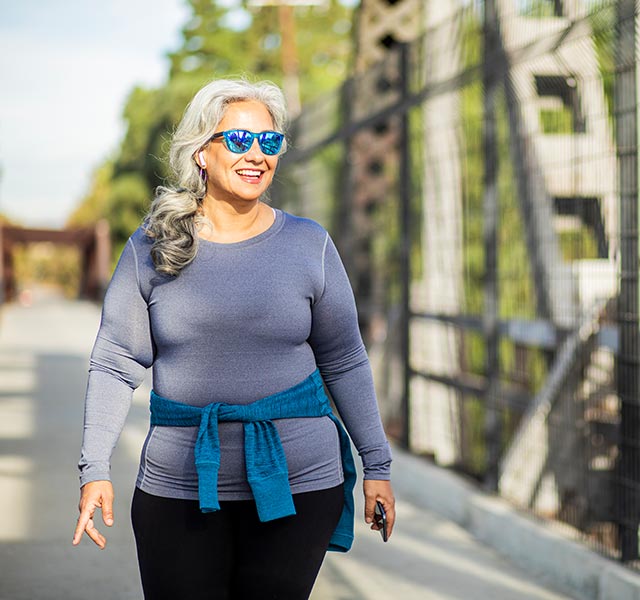Over the last ten to fifteen years, joint replacement surgeries have become increasingly popular, says Trevor North, M.D., an orthopedic surgeon with Henry Ford Health. As new technology is allowing joint replacements to last longer and people are less willing to accept loss of function, people with knee pain or hip pain are more aggressively seeking out surgery.
“The age that you get surgery depends upon your physiological health, your level of disability, and what you’re looking to get out of joint replacement,” says Dr. North. “The ideal age range for joint replacement surgery is from 55 to 75. Anyone outside of that age range will need to prove they can tolerate the post-operation recovery and rehabilitation, and their expectations need to be well defined.”
Whether you are out of the ideal age range, or you aren’t yet sure whether surgery is right for you, here are several ways you can lessen joint pain in the meantime:
- Exercise. It’s best to talk to your doctor before starting an exercise program, but engaging in mild to moderate activity (like swimming or water aerobics, biking, gardening, or racket sports) may be beneficial for joint pain, says Michelle Gambino-Gorney, an athletic trainer with Henry Ford Health. Traditional physical therapy is recommended, too, as it provides therapeutic exercises tailored to managing your joint pain.
- Try holistic therapies like therapeutic massage or acupuncture. Massage therapy helps to reduce pain and stress on the joints, Gambino-Gorney says. The ancient Chinese technique of acupuncture can also alleviate pain and stiffness. Thin needles are strategically placed on the body, and they react with brain chemicals to reduce pain.
- Take warm showers in the morning. The hot water will “warm up” your joints and reduce stiffness, says Gambino-Gorney.
- Eat an anti-inflammatory diet. “Fruits and vegetables have antioxidants that reduce inflammation and joint pain,” says Gambino-Gorney. “Eat three cups of vegetables and two cups of fruit each day, along with plenty of omega-three fatty acids, like salmon, tuna, flaxseeds and walnuts.” Avoid sugary food and drinks, refined grains and processed foods—they aren’t nutritious and can lead to more inflammation.
- Wear supportive shoes. Look for shoes with cushioning and arch support. “Anything with a flat sole (like flip flops) is not recommended if you have knee or ankle pain,” says Gambino-Gorney.
- Lose weight. Excess weight can be problematic for joint pain. “You can reduce pressure on your joints by losing weight,” Gambino-Gorney says. “A loss of 10 pounds is a loss of pressure on the knees by 50 pounds. If you can reduce that extra pressure on the knees, hopefully it will decrease the pain.”
- Use a walking aid. “It’s a little more difficult to get younger people to do this, but the use of a cane takes about 50% of the force away from the joints,” says Dr. North. “You should hold the cane in the opposite hand of the joint that’s painful. (For younger people who have knee pain but might not want to use a cane, braces that help stabilize the knee joint can reduce swelling.)
Whichever changes you decide to implement, it’s best to work with your doctor to ensure you’re taking the proper steps for you.
To find a doctor or athletic trainer at Henry Ford, visit henryford.com or call 1-800-HENRYFORD (436-7936).
Dr. Trevor North is an orthopedic surgeon who sees patients at Henry Ford Hospital in Detroit, Henry Ford Medical Center -- Lakeside in Sterling Heights, and Henry Ford Medical Center -- Pierson Clinic in Grosse Pointe Farms.
Michelle Gambino-Gorney, MA, AT, ATC is an athletic trainer who sees patients at Henry Ford Medical Center in Bloomfield Township and Henry Ford Medical Center -- Columbus in Novi.



